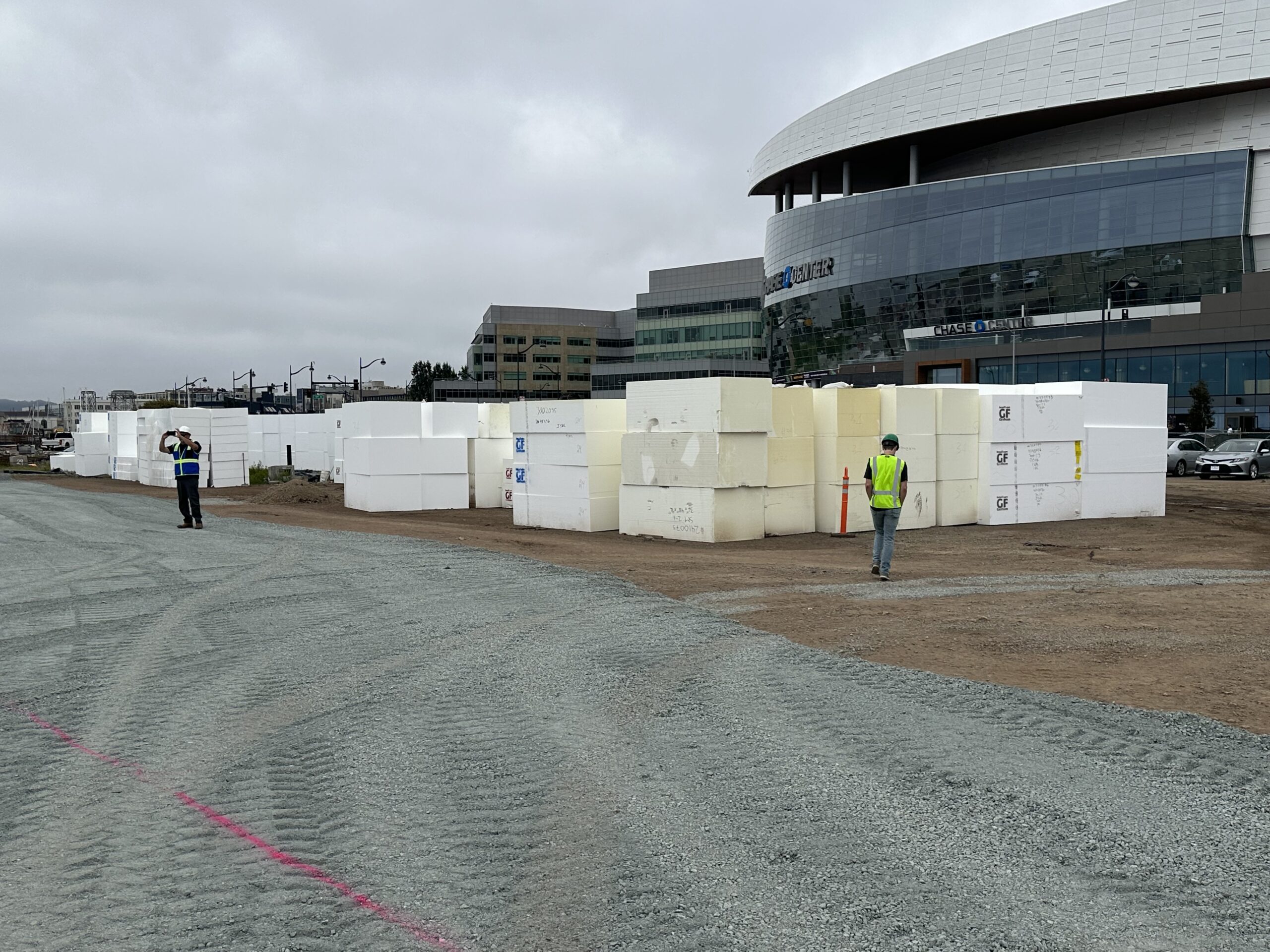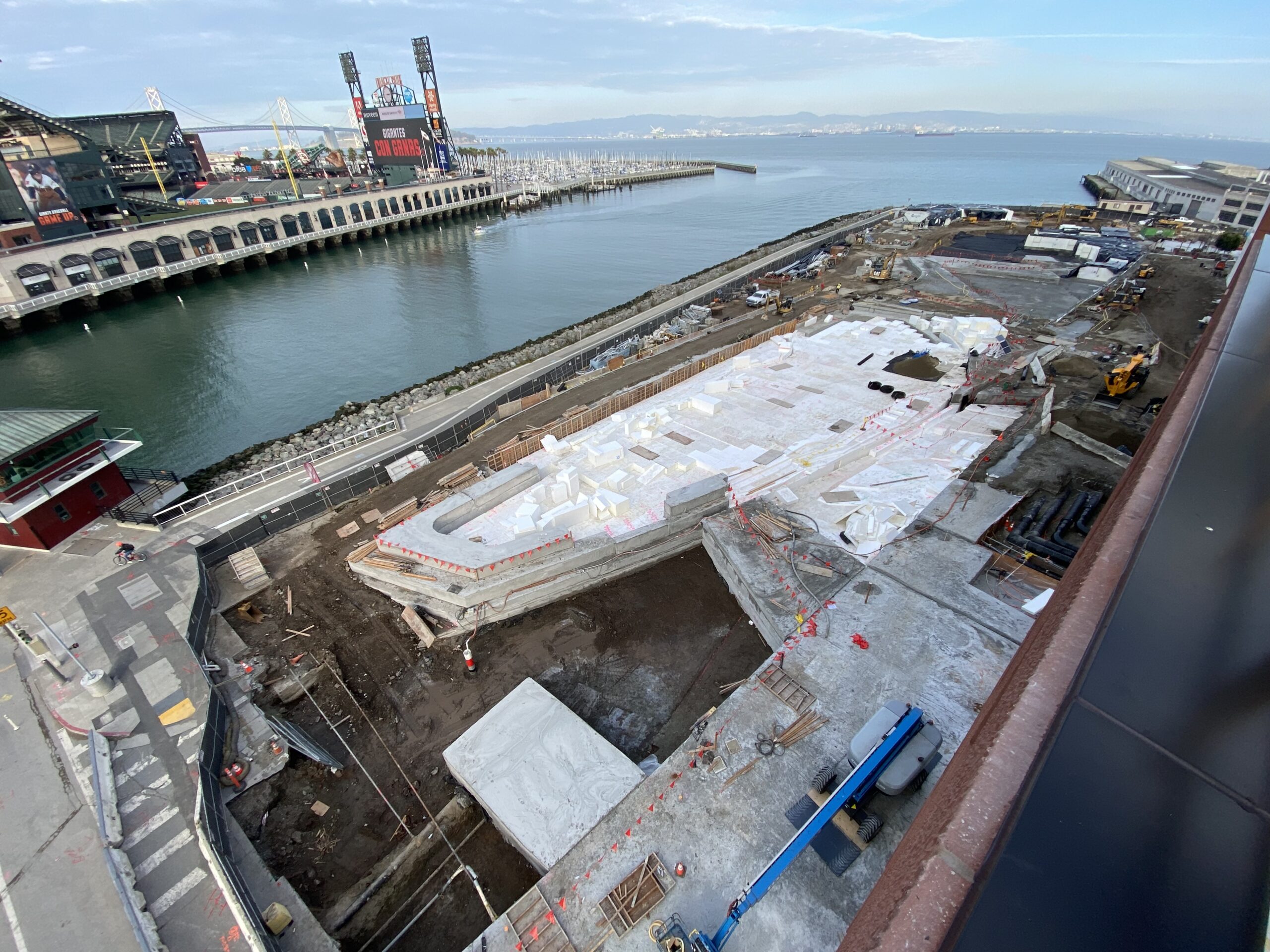EPS geofoam, or polystyrene, was first developed in Germany in the 1930s by I. G. Farben. But it wasn’t until the early 1970s that EPS geofoam was first used for a construction application —the Flom Bridge in Oslo, Norway. The foam was used to help prevent damage to the roadway that occurs from frost heave. That same year, the Norwegian Public Roads Authorities began using polystyrene in road embankments. The Norwegians were quick to recognize the advantages of polystyrene and embrace it. So, it wasn’t a big surprise that Norway hosted the first official International Geofoam Conference in 1985.
The second major EPS geofoam block construction project took place in Japan with the runway expansion of Tokyo International Airport (now known as Narita International Airport). EPS geofoam was a huge success in Japan as well. From 1985 to 1987 more than 2,000 construction projects in Japan used EPS geofoam.
It wasn’t until the late 1980’s that the earliest uses of EPS geofoam blocks were recorded in the U.S. One early construction project took place in 1989 on a stretch of Highway 160 in Colorado where a slope had destabilized resulting in a landslide. EPS geofoam blocks were used as fill to stabilize and support the embankment to discourage any future re-occurrences. The project report stated that the use of EPS geofoam versus conventional methods of restoration resulted in an 84% reduction to the total cost of the project!
Around the same time, EPS geofoam blocks were used in the installation of the Trans Alaska Pipeline for utility insulation and protection and for embankment and utility protection for the Highway I-15 project in Utah. The latter project, which was completed in 2001, used approximately 3.53 million cubic feet of EPS geofoam and saved the project $450,000. It is still the largest documented EPS geofoam project in the U.S.
In 2005 EPS geofoam received a nod from the building industry when it released the ASTM D6817 standard, specifically for geofoam. The following year, the Federal Highway Commission designated EPS geofoam as the go-to product for lightweight fill projects on a tight deadline.
Since the early days, more and more uses for EPS geofoam have been discovered, and it is now used all over the globe. It is a very versatile material which lends itself to multiple uses. EPS geofoam blocks have been used for floating greens in golf courses, road widening, bridge abutments, bridge underfill, slope stabilization, stadium and theater seating foundations, building foundations, dam construction, airport runways, green roofs and more.
MarketsandMarkets™, a provider of B2B research on high growth emerging opportunities, anticipates the geofoams market (EPS and XPS geofoam) to grow from $796 million in 2019 to 1,069 million by 2024 at a compound annual growth rate (CAGR) of 6.3% from 2019 to 2024. The impetus for this fast-paced growth comes from high demand in several different sectors from road construction to buried structures as well as increased infrastructure construction in emerging economies. And EPS geofoam is projected to be the clear winner in the marketplace through 2024 in both value and volume.
Here’s a look at some areas where usage of EPS styrofoam is growing and why.
Road Construction
EPS geofoam blocks have been used in road construction globally since the 1970s and they have proven to be a popular alternative to traditional fill materials such as cellular concrete, pumice, shredded tires, soil and wood chips. Today EPS geofoam blocks are widely accepted as the lightweight fill material of choice because they speed the construction process, save time and money and provide greater stability than similar lightweight fill materials. According to projections, this application for EPS geofoam will continue to grow. MarketsandMarkets anticipates the road and highway construction segment of the geofoams market will grow at the largest CAGR in terms of value and volume from 2019 to 2014.
Ease of use is another factor for the popularity of EPS geofoam blocks in road construction applications. They are extremely lightweight—about one to two pounds per cubic foot depending on size—and can easily accommodate any necessary onsite changes. The only process workers have to do is stack the blocks to the desired elevation, cover them with a geomembrane, then top them with asphalt or concrete.
Stadium/Theatre Seating Platforms
Styrofoam building blocks are very popular for creating tiered seating in both new and existing construction for theatres, auditoriums, schools and churches. Demand is growing due to the material’s light weight, compressive resistance, durability and ease of installation. In fact, installation is fast, uses very little labor and requires no large equipment or major tools because Styrofoam blocks can be precut to size. There’s little to no cutting necessary on the jobsite. Installation is simple. Gripper plates are used to fasten the foam blocks together to keep them secure and eliminate lateral movement.
Bridge Abutments
Supporting bridge construction is one of the major applications for Styrofoam blocks. Based on their many advantages, Styrofoam blocks are fast becoming the main building material used in the construction of bridge abutments. The high compressive resistance rate of Styrofoam blocks makes them stand up to the repeated stress and compression that are common for structures like bridges. These foam blocks are lightweight, cost-effective and easy to shape compared to traditional fill materials such as soil and rocks. They add little additional load and stress to the surrounding area, barely impacting the soil underneath the bridge abutments, while creating a sturdy foundation. And Styrofoam blocks are resistant to harsh natural conditions such as moisture that can cause wear and tear on the supporting structures of the bridge.
Side Hills
The use of EPS geofoam blocks as fill for a side hill project has been a common practice for years. A side hill project requires a material that is moisture resistant, and the closed-cell structure of EPS geofoam makes it an ideal candidate. And since hills don’t come in standard sizes and shapes, being able to customize EPS geofoam blocks to the size and shape you need for the job is a huge plus.
Another requirement for side hill projects is a lightweight fill — the lighter, the better. The goal is to reduce the weight and pressure against the side of the hill to stabilize it, thereby preventing future landslides. EPS geofoam blocks weigh in at only one to two pounds per cubic foot, depending on size. That makes EPS geofoam blocks up to 100 times lighter than other traditional fills with similar compressive strengths.
Building Foundations
Creating building foundations from Styrofoam blocks is another widely used application practice, whether it’s for a single residence or a large corporate HQ project. Lightweight structural foam blocks can be used as a compensating foundation to reduce the load on underlying compressible soils and minimize building settlement in areas with potential bearing capacity issues. When the soil that is excavated is equal to the full weight of the new structure, the foundation is called “floating” or “fully compensating.”
Styrofoam’s lightweight offers other advantages, too. Styrofoam blocks can easily be carried by workers, with no heavy equipment required. Styrofoam blocks can also be customized to fit the job, making the installation quick and easy, while reducing labor costs. In addition, Styrofoam blocks have a high compressive resistance factor, which makes them far more sturdy than other traditional fill materials.
Retaining Walls
Traditionally, concrete, sand, soil or rock were the materials installed for retaining walls. One big issue with all of them is their heavy weight. Heavier material is more difficult to handle and maneuver and it takes more time, equipment and labor to construct a retaining wall than it would with EPS geofoam blocks. EPS geofoam blocks are so much lighter they provide less lateral pressure to the retaining wall, thus preventing settlement. And EPS geofoam blocks’ water-resistant qualities means they won’t deteriorate or leach into the ground over time. Plus, the superior stability and high compressive resistance that EPS geofoam blocks bring to the table make them the perfect solution for your retaining wall projects.
Fill for underground utilities
There’s a reason Styrofoam blocks were chosen for fill on the Trans Alaska Highway and that they continue to be the material of choice for underground utility fill. Styrofoam blocks not only provide underground pipe, tunnels and heaters with protection from external compression, they also keep them insulated against fluctuating temperatures. And you’ll always have the perfect shape, size and angle for the job because Styrofoam blocks can be customized to your exact dimensions or easily cut to size. In addition, the light weight of Styrofoam blocks doesn’t add any additional load on the utilities. Styrofoam blocks also distribute weight evenly round the piping or utility lines, reducing vertical stress on pipes and utilities. This helps to protect buried structures and utilities from potential ruptures or collapses.
Landscaping for living roofs, golf courses and parks
As more and more people embrace the green movement, there’s a move toward “living” or green roofs. Green roofs help with natural cooling, water treatment and air filtration. They also contribute to a more aesthetically pleasing building design. This is achieved by using EPS geofoam blocks as fill underneath the soil. Golf courses are also seeing the advantages to be gained from using EPS geofoam blocks. For example, the 14th Green at Coeur d’Alene Resort in Idaho installed a unique floating green, which requires golfers to take a boat to play it. Using EPS geofoam blocks as a lightweight fill material allows you to create the desired elevations and shape.
So that’s a look at EPS geofoam in the past and how its popularity and applications have grown over the years. We’re sure you’ll enjoy the benefits of using it for these applications as well as others!







